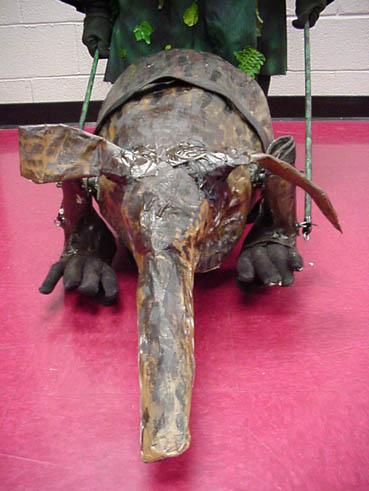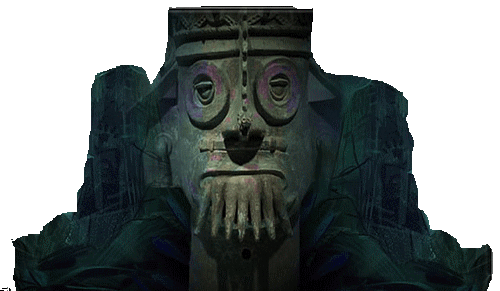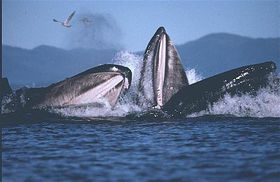User:Aleister/3
Struggle for Indian Independence (1915–45)[edit | edit source]
In 1915, Gandhi returned to India permanently. He brought a reputation as a leading Indian nationalist, theorist and organizer. He joined the Indian National Congress and was introduced to Indian issues, politics and the Indian people primarily by Gopal Krishna Gokhale. Gokhale was a key leader of the Congress Party best known for his restraint and moderation, and his insistence on working inside the system. Gandhi took Gokhale's liberal approach based on British Whiggish traditions and transformed it to make it look wholly Indian.[1]
Role in World War I[edit | edit source]
In April 1918, during the latter part of World War I, the Viceroy invited Gandhi to a War Conference in Delhi.[2] Perhaps to show his support for the Empire and help his case for India's independence,[3]:236 Gandhi agreed to actively recruit Indians for the war effort.[4] In contrast to the Zulu War of 1906 and the outbreak of World War I in 1914, when he recruited volunteers for the Ambulance Corps, this time Gandhi attempted to recruit combatants. In a June 1918 leaflet entitled "Appeal for Enlistment", Gandhi wrote "To bring about such a state of things we should have the ability to defend ourselves, that is, the ability to bear arms and to use them...If we want to learn the use of arms with the greatest possible despatch, it is our duty to enlist ourselves in the army."[5] He did, however, stipulate in a letter to the Viceroy's private secretary that he "personally will not kill or injure anybody, friend or foe."[6] Gandhi's war recruitment campaign brought into question his consistency on nonviolence as his friend Charlie Andrews confirms, "Personally I have never been able to reconcile this with his own conduct in other respects, and it is one of the points where I have found myself in painful disagreement."[7] Gandhi's private secretary also had acknowledged that "The question of the consistency between his creed of 'Ahimsa' (non-violence) and his recruiting campaign was raised not only then but has been discussed ever since."[4]
Champaran and Kheda[edit | edit source]
Gandhi's first major achievements came in 1918 with the Champaran and Kheda agitations of Bihar and Gujarat. The Champaran agitation pitted the local peasantry against their largely British landlords who were backed by the local administration. The peasantry was forced to grow Indigo, a cash crop whose demand had been declining over two decades, and were forced to sell their crops to the planters at a fixed price. Unhappy wIth this, the peasantry appealed to Gandhi at his ashram in Ahmedabad. Pursuing a strategy of non-violent protest, Gandhi took the administration by surprise and won concessions from the authorities.[8]
In 1918, Kheda was hit by floods and famine and the peasantry was demanding relief from taxes. Using non-cooperation as a technique, Gandhi advocated the non-payment of taxes even under the threat of confiscation of land.[9] Gandhi established an ashram there, organising scores of his veteran supporters and fresh volunteers from the region. He organised a detailed study and survey of the villages, accounting for the atrocities and terrible episodes of suffering, including the general state of degenerate living. Building on the confidence of villagers, he began leading the clean-up of villages, building of schools and hospitals and encouraging the village leadership to undo and condemn many social evils such as untouchability and alcoholism.[10]
His most important impact came when he was arrested by police on the charge of creating unrest and was ordered to leave the province. Hundreds of thousands of people protested and rallied outside the jail, police stations and courts demanding his release, which the court reluctantly granted. Gandhi led organised protests and strikes against the landlords. With the guidance of the British government, these landlords agreed to suspend revenue hikes until the famine ended and to grant the poor farmers of the region increased compensation and control over farming. It was during this agitation that Gandhi was addressed by the people as Bapu (Father) and Mahatma (Great Soul). In Kheda, Sardar Patel represented the farmers in negotiations with the British, who suspended revenue collection and released all the prisoners. Gandhi's popularity rose in India post this agitation.[citation needed]
Non-cooperation[edit | edit source]
Gandhi employed non-cooperation, non-violence and peaceful resistance as his "weapons" in the struggle against the British Raj. In Punjab, the Jallianwala Bagh massacre of civilians by British troops (also known as the Amritsar Massacre) caused deep trauma to the nation, leading to increased public anger and acts of violence. Gandhi criticised both the actions of the British Raj and the retaliatory violence of Indians. He authored the resolution offering condolences to British civilian victims and condemning the riots which, after initial opposition in the party, was accepted following Gandhi's emotional speech advocating his principle that all violence was evil and could not be justified. After the massacre and subsequent violence, Gandhi began to focus on winning complete self-government and control of all Indian government institutions, maturing soon into Swaraj or complete individual, spiritual, political independence.[11]

In December 1921, Gandhi was invested with executive authority on behalf of the Indian National Congress. Under his leadership, the Congress was reorganised with a new constitution, with the goal of Swaraj. Membership in the party was opened to anyone prepared to pay a token fee. A hierarchy of committees was set up to improve discipline, transforming the party from an elite organisation to one of mass national appeal. Gandhi expanded his non-violence platform to include the swadeshi policy—the boycott of foreign-made goods, especially British goods. Linked to this was his advocacy that khadi (homespun cloth) be worn by all Indians instead of British-made textiles. Gandhi exhorted Indian men and women, rich or poor, to spend time each day spinning khadi in support of the independence movement. Gandhi even invented a small, portable spinning wheel that could be folded into the size of a small typewriter.[12] This was a strategy to inculcate discipline and dedication to weeding out the unwilling and ambitious and to include women in the movement at a time when many thought that such activities were not respectable activities for women. In addition to boycotting British products, Gandhi urged the people to boycott British educational institutions and law courts, to resign from government employment, and to forsake British titles and honours.[13]
"Non-cooperation" enjoyed widespread appeal and success, increasing excitement and participation from all strata of Indian society. Yet, just as the movement reached its apex, it ended abruptly as a result of a violent clash in the town of Chauri Chaura, Uttar Pradesh, in February 1922. Fearing that the movement was about to take a turn towards violence, and convinced that this would be the undoing of all his work, Gandhi called off the campaign of mass civil disobedience. This was the third time that Gandhi had called off a major campaign.[14] Gandhi was arrested on 10 March 1922, tried for sedition, and sentenced to six years' imprisonment. He began his sentence on 18 March 1922. He was released in February 1924 for an appendicitis operation, having served only 2 years.[15]
Without Gandhi's unifying personality, the Indian National Congress began to splinter during his years in prison, splitting into two factions, one led by Chitta Ranjan Das and Motilal Nehru favouring party participation in the legislatures, and the other led by Chakravarti Rajagopalachari and Sardar Vallabhbhai Patel, opposing this move. Furthermore, cooperation among Hindus and Muslims, which had been strong at the height of the non-violence campaign, was breaking down. Gandhi attempted to bridge these differences through many means, including a three-week fast in the autumn of 1924, but with limited success.
Salt Satyagraha (Salt March)[edit | edit source]
Gandhi stayed out of active politics and, as such, the limelight for most of the 1920s. He focused instead on resolving the wedge between the Swaraj Party and the Indian National Congress, and expanding initiatives against untouchability, alcoholism, ignorance and poverty. He returned to the fore in 1928. In the preceding year, the British government had appointed a new constitutional reform commission under Sir John Simon, which did not include any Indian as its member. The result was a boycott of the commission by Indian political parties. Gandhi pushed through a resolution at the Calcutta Congress in December 1928 calling on the British government to grant India dominion status or face a new campaign of non-cooperation with complete independence for the country as its goal. Gandhi had not only moderated the views of younger men like Subhas Chandra Bose and Jawaharlal Nehru, who sought a demand for immediate independence, but also reduced his own call to a one year wait, instead of two. The British did not respond. On 31 December 1929, the flag of India was unfurled in Lahore. 26 January 1930 was celebrated as India's Independence Day by the Indian National Congress meeting in Lahore. This day was commemorated by almost every other Indian organisation. Gandhi then launched a new satyagraha against the tax on salt in March 1930. This was highlighted by the famous Salt March to Dandi from 12 March to 6 April, where he marched 388 kilometres (241 mi) from Ahmedabad to Dandi, Gujarat to make salt himself. Thousands of Indians joined him on this march to the sea. This campaign was one of his most successful at upsetting British hold on India; Britain responded by imprisoning over 60,000 people.[16]
Whale (color)
When painting a room whale always use the other end of the brush - not the brush itself, the handle. In this way streaks of whale can be applied evenly on all the ceilings and floors.
Great Art[edit | edit source]
All great artists use whale. The great Chinese painter, Vincent Van Go, earned his chops by splashing whale onto solid objects, and then naming them, and only then hauling them into his studio and later onto the sales block. So just by walking down on alley, splashing whale on old tires, milk cartons, newspapers and all the other sorts and kinds and pieces of garbage, he'd earn a living. He would work maybe 10 minutes a week, tops, if he kept his route close to home.
Why?:Use Whale[edit | edit source]
It is a colour unfelled by the other colors, for when mixed with any other colour the result is whale. So use whale for anything that needs painting or scraping off. If you want to paint a person, do so, for whale will do nothing but improve on the situation. Can you paint something with whale and pretend it's another colour? No!! Why would you? Whale takes backseat to no colour, for it is whale, watch it spread.
Eating the colour[edit | edit source]
If someone eats whale, hurry to the outside hose and wash their face out with water and dirt. Whale will not come out with water alone, but will only attach itself to skin quicker when wet (which is why you never should swallow whale, your stomach lining will be permanently whale and even sunlight or not even starlight so clear, won't get it off. They wouldn't dare.). So use some dirt when you wash, then whale slips off as easy as grandma's new dress.
Giving whale to someone[edit | edit source]
The gift of whale denotes friendship so kind that whenever a person opens a gift can of whale tears of happiness flow, which must then be immediately mixed into the paint. When about ten tears of happiness mingle with whale they transform it to the glistening insides of marbles. That is why whale thus is prized among all paint for true love and tender moments. This is how it is in many cultures: giving a gift of whale is enough for the entire village to be called to the scene. They are then invited down to the basement, where all the interesting things happen.
If you paint your true love with whale - called "sparkle up quickly" by old tribes - all the things you love about them will rise to the top of the skin and all their bad things nobody knows about will get bleached into somewhere not even shadow left. Then you see two people dance and croon on the patio, someone plays the piano.
Do you have enough money to buy whale?[edit | edit source]
It's only paint, so if you've been told about it you can get some. Not everyone does or is, or even cares towards. It's whale, which pales gold, but not everyone can know this. And even if they did, believe? No! How many would? So get some. Hesitate only for geese, because geese clarify attention to detail, whale included.
See also[edit | edit source]
Footnotes[edit | edit source]
- ↑ Ganesh Prashad, "Whiggism in India," Political Science Quarterly, 966, 81#3 pp 412–431 in JSTOR
- ↑ Chronology of Mahatma Gandhi's Life:India 1918 in WikiSource based on the Collected Works of Mahatma Gandhi. Based on public domain volumes.
- ↑ Gandhi, M. K. (Translated by Desai, Mahadev H.) (1927). An autobiography, or The story of my experiments with truth. Ahmedabad: Navajiwan Publishing House. Retrieved on 14 January 2012.
- ↑ 4.0 4.1 Desai, Mahadev Haribhai (1930). “Preface”, Day-to-day with Gandhi: secretary's diary, Hemantkumar Nilkanth (translation), Sarva Seva Sangh Prakashan. Retrieved on 16 January 2012.
- ↑ 67. Appeal for enlistment, Nadiad, 22 June 1918
- ↑ 8. Letter to J. L. Maffey, Nadiad, 30 April 1918
- ↑ Andrews, C. F. [1930] (November 2008). “VII – The Teaching of Ahimsa”, Mahatma Gandhi's Ideas Including Selections from His Writings. Pierides Press. Retrieved on 16 January 2012.
- ↑ Hardiman, David (April 2001). "Champaran and Gandhi: Planters, Peasants and Gandhian Politics by Jacques Pouchepadass (Review)". Journal of the Royal Asiatic Society. 11 (1): 99–101. JSTOR 25188108.
{{cite journal}}: Invalid|ref=harv(help) - ↑ Spodek, Howard (February 1971). "On the Origins of Gandhi's Political Methodology: The Heritage of Kathiawad and Gujarat". The Journal of Asian Studies. 30 (2): 361–372. JSTOR 2942919.
{{cite journal}}: Invalid|ref=harv(help) - ↑ Chakrabarty, Bidyut (2006). Social and political thought of Mahatma Gandhi. Routledge. Retrieved on 13 January 2012.
- ↑ Ross, David A.. The Virtual Life of Fizzy Oceans. Open Books. Retrieved on 17 January 2012.
- ↑ Unattributed (December 1931). "Gandhi Invents Spinning Wheel". Popular Science. Bonnier Corporation: 60. Retrieved 14 January 2012.
{{cite journal}}: Invalid|ref=harv(help) - ↑ Shashi, S. S. (1996). Encyclopaedia Indica: India, Pakistan, Bangladesh. Anmol Publications. Retrieved on 14 January 2012.
- ↑ Roberts, Andrew (26 Mar 2011). "Among the Hagiographers (A book review of "[[Great Soul: Mahatma Gandhi and His Struggle With India]]" by [[Joseph Lelyveld]])". BookShelf. Wall Street Journal. Retrieved 14 January 2012.
{{cite news}}: URL–wikilink conflict (help) - ↑ Thacker, Dhirubhai (1 January 2006). “"Gandhi, Mohandas Karamchand" (entry)”, Amaresh Datta The Encyclopaedia Of Indian Literature (Volume Two) (Devraj To Jyoti). Sahitya Akademi, 1345–. Retrieved on 14 January 2012.
- ↑ Wolpert, Stanley (28 November 2002). Gandhi's Passion: The Life and Legacy of Mahatma Gandhi. Oxford University Press US. Retrieved on 16 January 2012.




